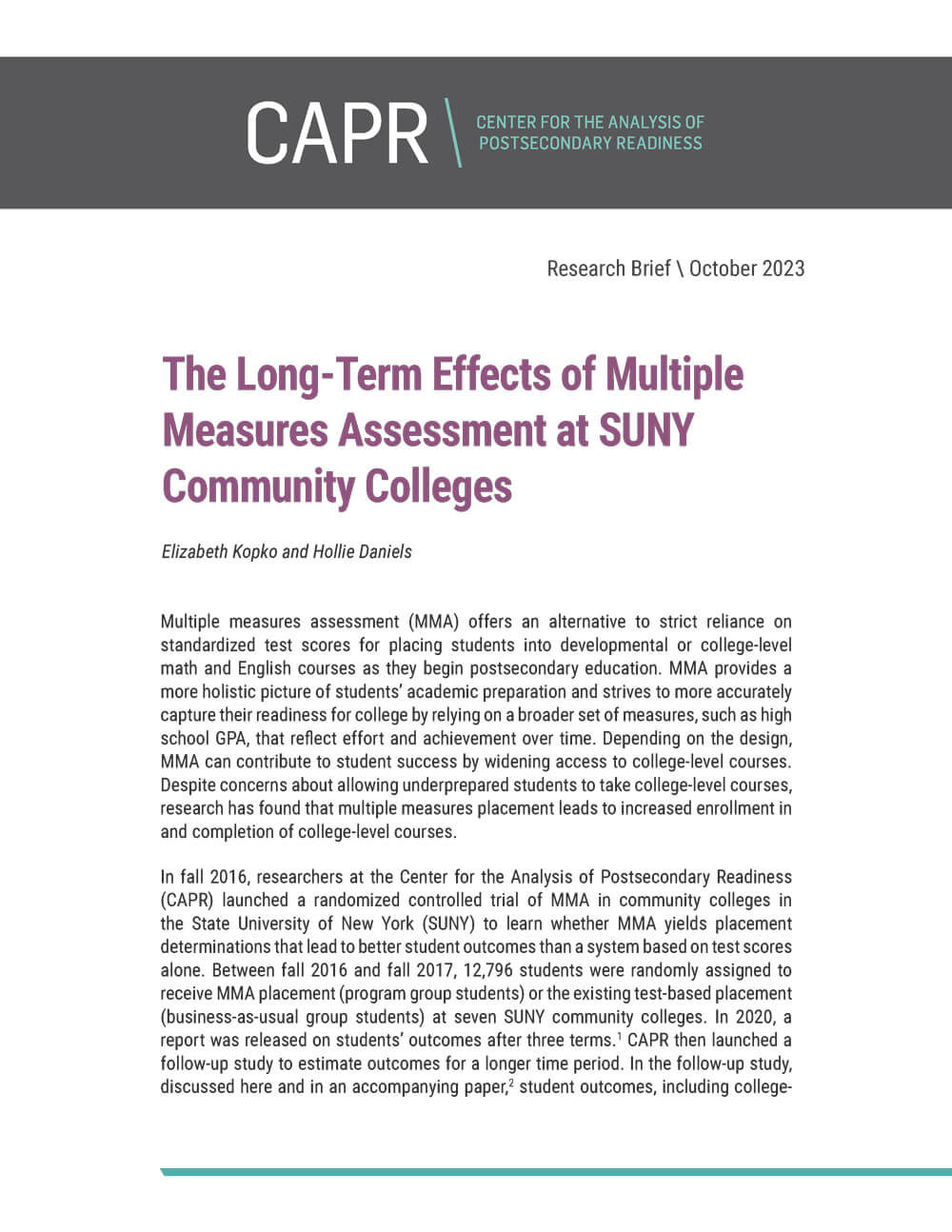
Multiple measures assessment (MMA) offers an alternative to strict reliance on standardized test scores for placing students into developmental or college-level math and English courses as they begin postsecondary education. MMA provides a more holistic picture of students’ academic preparation and strives to more accurately capture their readiness for college by relying on a broader set of measures, such as high school GPA, that reflect effort and achievement over time. Depending on its design, MMA can contribute to student success by widening access to college-level courses.
In fall 2016, CAPR began a randomized controlled trial of MMA in community colleges in the State University of New York (SUNY) to learn whether MMA yields placement determinations that lead to better student outcomes than a system based on test scores alone. In 2020, a report was released on students’ outcomes after three terms. CAPR then launched a follow-up study to estimate outcomes for a longer time period. In the follow-up study, discussed here and in an accompanying working paper, student outcomes, including college-level math and English enrollment and completion and college-level credit attainment, were tracked for at least nine terms from the time of testing, through spring 2021. The findings were disaggregated by race/ethnicity, Pell recipient status, and gender subgroups; a cost analysis of MMA was also conducted. This brief focuses on “bump-zone” findings—those for the subset of students whose placements changed (or would have changed) under MMA.
The study finds that—four and a half years after random assignment—students who were “bumped up” into college-level math and English courses through MMA were much more likely to have enrolled in and completed a college-level course (with a grade of C or higher) than similar business-as-usual group students. The benefits of MMA were likely driven primarily by increased access to college-level courses rather than by any improved accuracy from using MMA. Regardless of subject area, program group students who were bumped up through MMA had better outcomes than similar students in the business-as-usual group, and program group students who were bumped down through MMA had worse outcomes than similar business-as-usual group students. It is important to recognize that MMA can be designed in a way that promotes more access and that prevents students from receiving a lower placement.
Based on the study, the authors share three recommendations for colleges:
- Colleges should expand access to college-level courses by giving students the highest placement possible.
- Colleges should use a form of MMA that is relatively easy to adopt and that mitigates the risk of lowering any student’s placement.
- Colleges should consider coupling MMA with other reforms such as corequisite support courses to provide greater access to college-level coursework and improve longer term outcomes.
A CAPR toolkit for reforming assessment and placement using MMA is also available.
